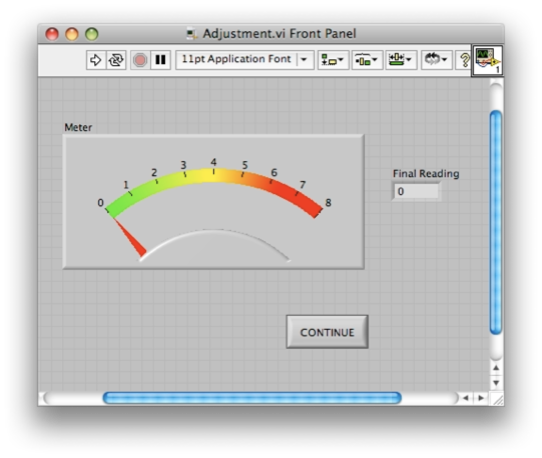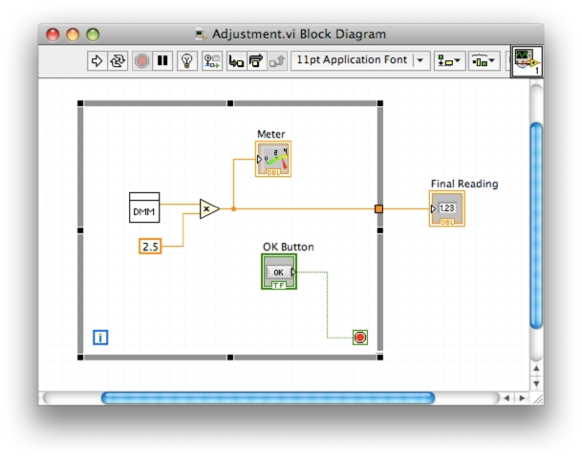LabVIEW - Introduction
LabVIEW is a programming language developed by National Instruments. It is designed to facilitate the rapid development of software for test, measurement and control applications.
LabVIEW is short for "Laboratory Virtual Instrumentation Engineering Workbench".
Code is drawn on screen in a flowchart like style, with predefined functions available for file i/o, instrument control etc.
Virtual Instrument (VI)
Each block of LabVIEW code is created in a VI, or Virtual Instrument. Each VI consists of both a front panel and a block diagram.

The front panel holds the controls (inputs) and indicators (outputs). The example shown above comprises of two indicators, a meter used to display a reading from a digital multimeter and a digital indicator which shows the final reading taken, and one control, a button control.

The diagram is used to hold the programming code. In the above example a VI is used to take a reading from a digital multimeter, the reading is multiplied by 2.5 and then displayed on the front panel meter. This is repeated until the button is pressed, at which point the loop is exited and the final reading is written into the "Final Reading" indicator.
LabVIEW Editions
LabVIEW is based on the original application which was released in 1986 for Apple Mac systems. Versions are available for Windows, Mac and Linux. There is a real time version which is available for Linux embedded systems, plus there is an FPGA version intended to simplify FPGA code development.
LabVIEW NXG was released and was intended as a replacement for the existing LabVIEW system, but eventually was dropped by National Instruments. It used a newer code base, and had a very different IDE similar to Visual Studio.
LabVIEW is available in Base, Full and Professional versions.
-
Base - Recommended for desktop measurement applications, includes basic mathematics and signal processing
-
Full - Adds advanced mathematics and signal processing functions, required for signal processing add-ons, real-time and FPGA
-
Professional - Recommended for applications requiring code validation, code/application deployment
Community Edition
In 2020 a new version of LabVIEW was released, a Community Edition. This version is free for home/educational use. It is actually a complete professional version, allowing complete applications to be developed and compiled.